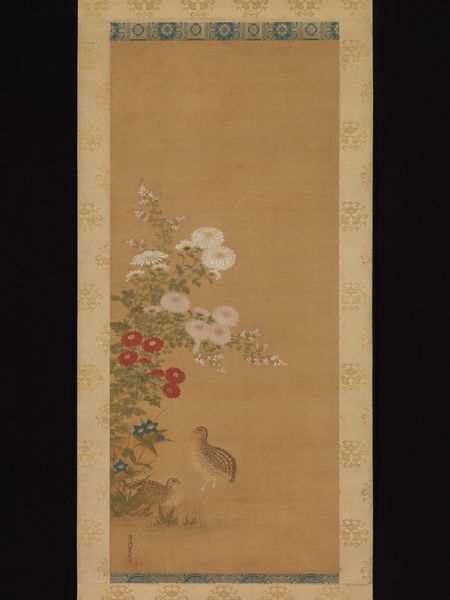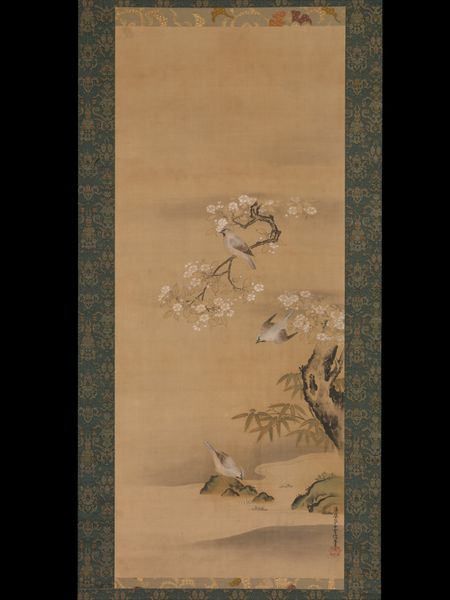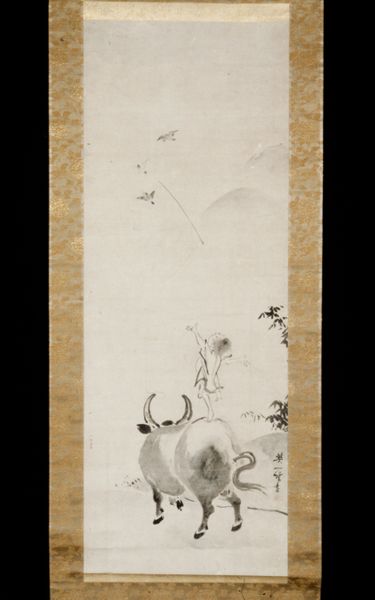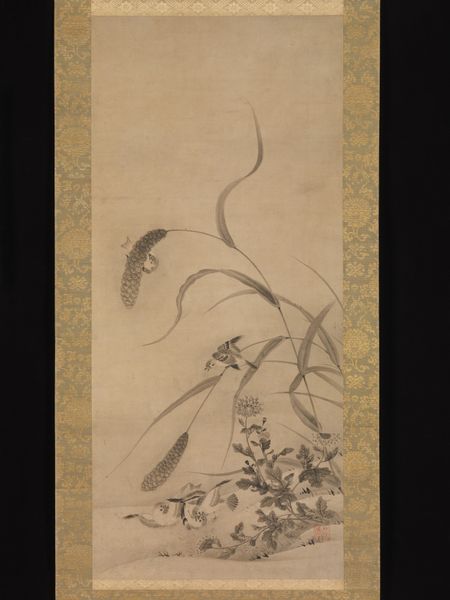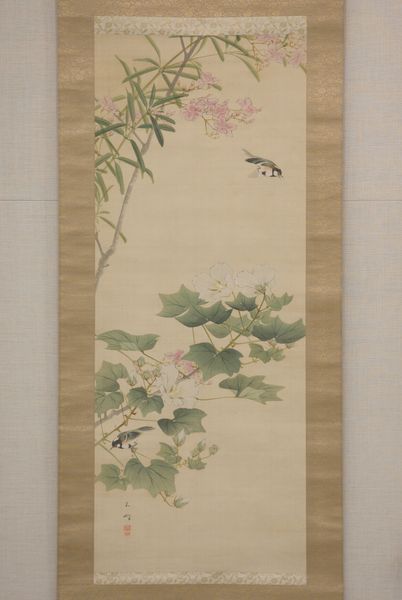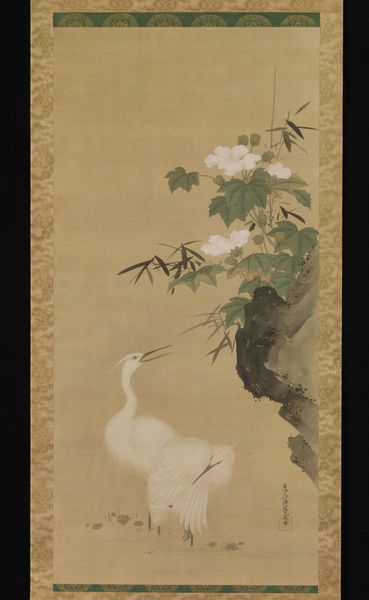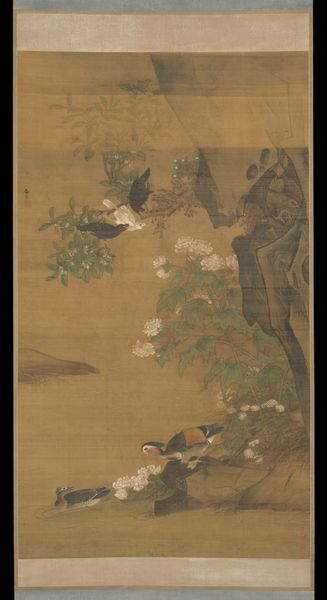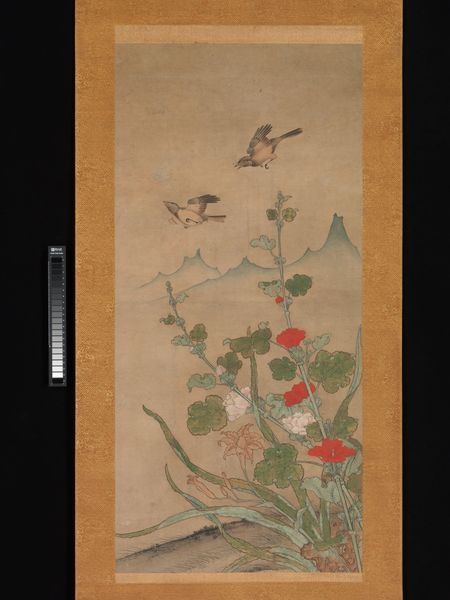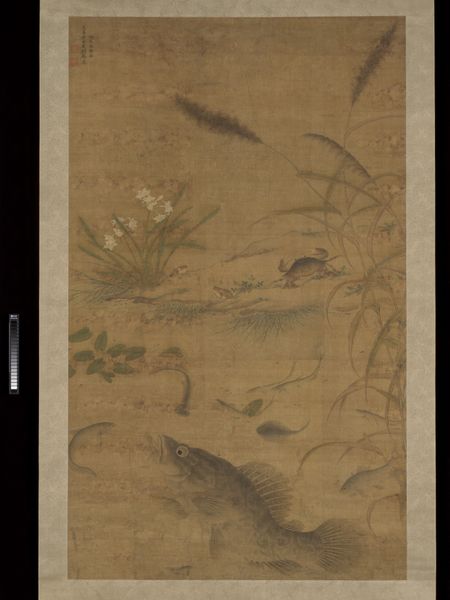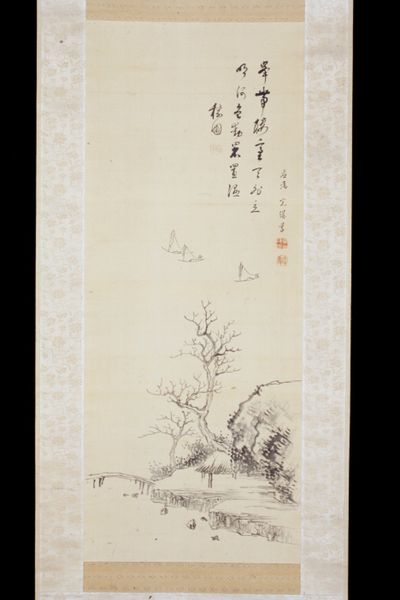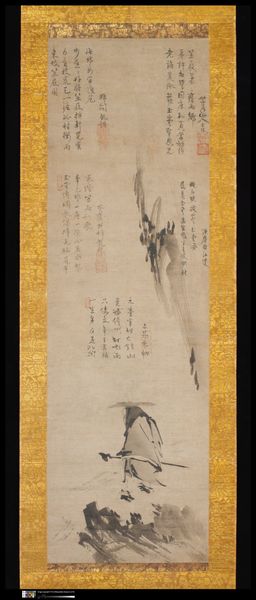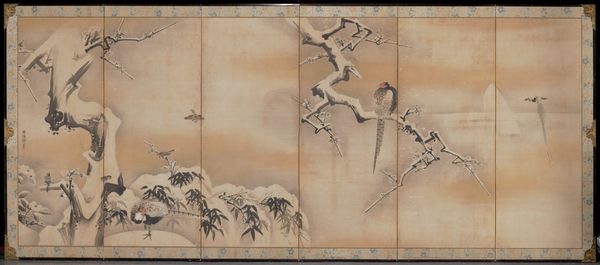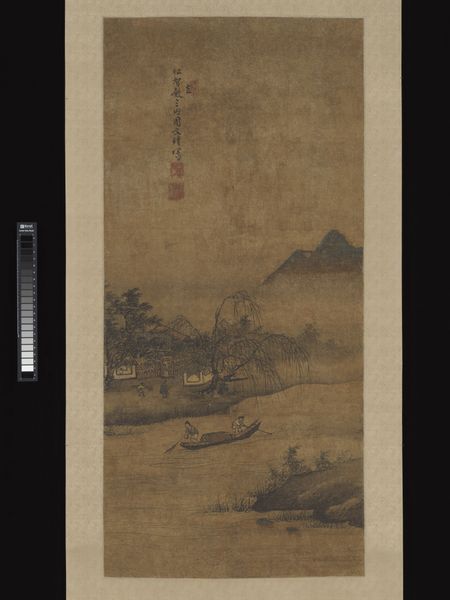
textile, ink
#
asian-art
#
landscape
#
textile
#
ukiyo-e
#
ink
Dimensions: 36 13/16 x 13 1/8 in. (93.5 x 33.34 cm)
Copyright: Public Domain
Sumiyoshi Hirosada painted "Two Quails with Pampas Grass" on silk, sometime between 1793 and 1862. It’s a delicate piece, reflecting the values of the Edo period in Japan. During this time, the Sumiyoshi school served the shogunate, the military dictatorship that had taken over power from the emperor. By painting in a classical Yamato-e style, Hirosada helped the shogunate establish its legitimacy by connecting it to earlier periods of imperial rule. The choice of subject matter is not accidental. Quails and pampas grass appear frequently in Japanese art, symbolizing autumn and the transience of life. This aesthetic was favored by the samurai class, who lived by a strict code of honor and were expected to be ready to die at any moment. The poem inscribed above the quails would provide valuable insight if translated. To fully understand this artwork, we can research the history of the Sumiyoshi school and the cultural values of the Edo period. Through close attention to the social and institutional context, we can gain a deeper understanding of the work.
Comments
minneapolisinstituteofart almost 2 years ago
⋮
A pair of quails gaze into the distance as pampas grass sways in the breeze. The inscription above is a Japanese poem (waka) written in a 5-7-5-7-7 syllable pattern: When the darkness falls [at dusk] / sleeves waving in the shadows / in the autumn field / lying on tail-like flowers [pampas grass] / quails cry in their bed The subject of poems since the classical Heian period (794-1185), quails became associated with autumn in apoetry anthology from the eleventh century. The author of this poem used multiple associations that connect to quails—autumn, pampas grass, bed, cry—to demonstrate his knowledge of classical poetry. The painting, though relatively simple in comparison, takes on a new meaning with the references to the bird’s cries and evoked scenery. Building upon precedents, both poet and painter created a new collaborative work.
Join the conversation
Join millions of artists and users on Artera today and experience the ultimate creative platform.
